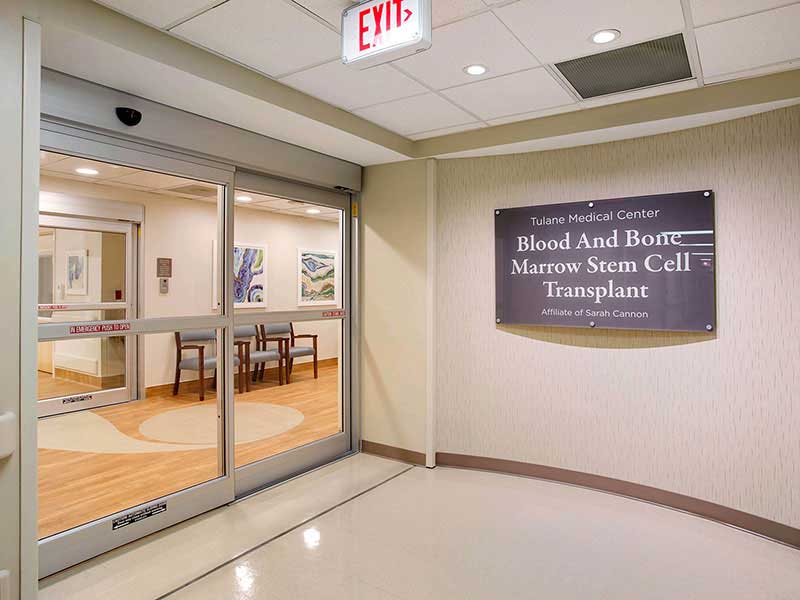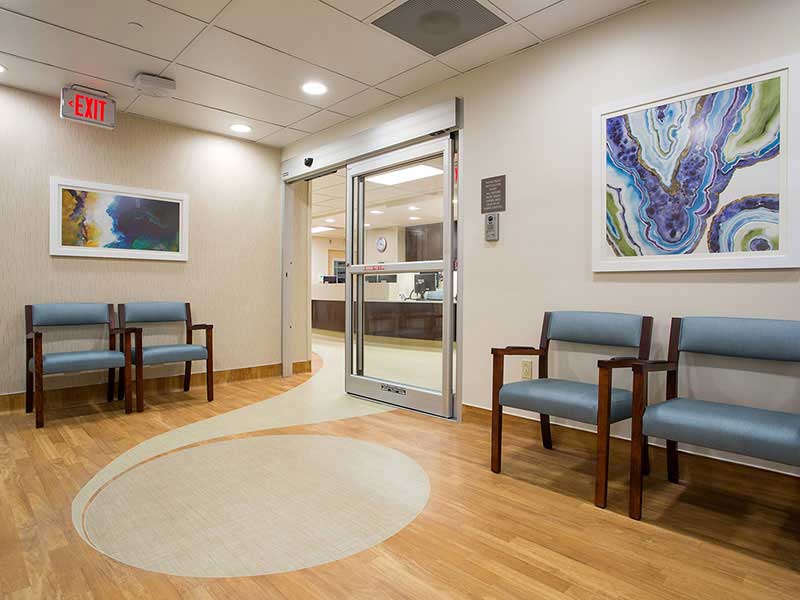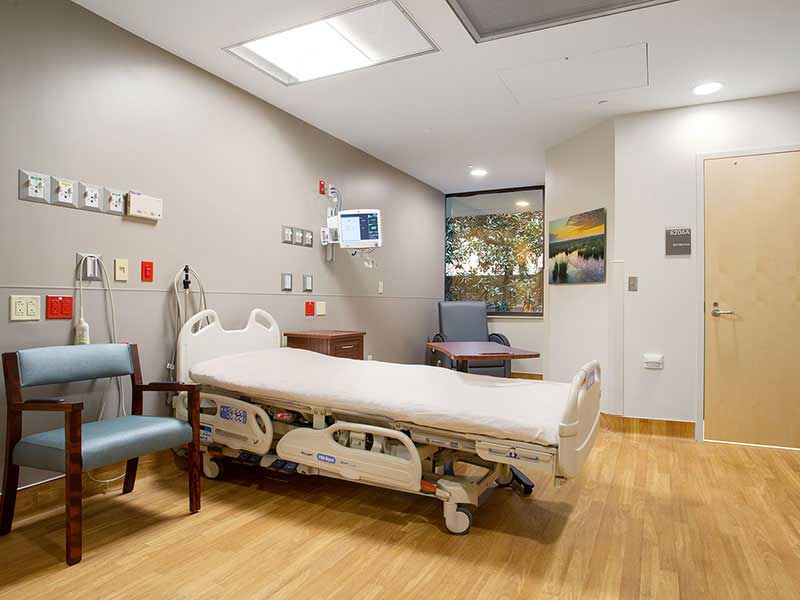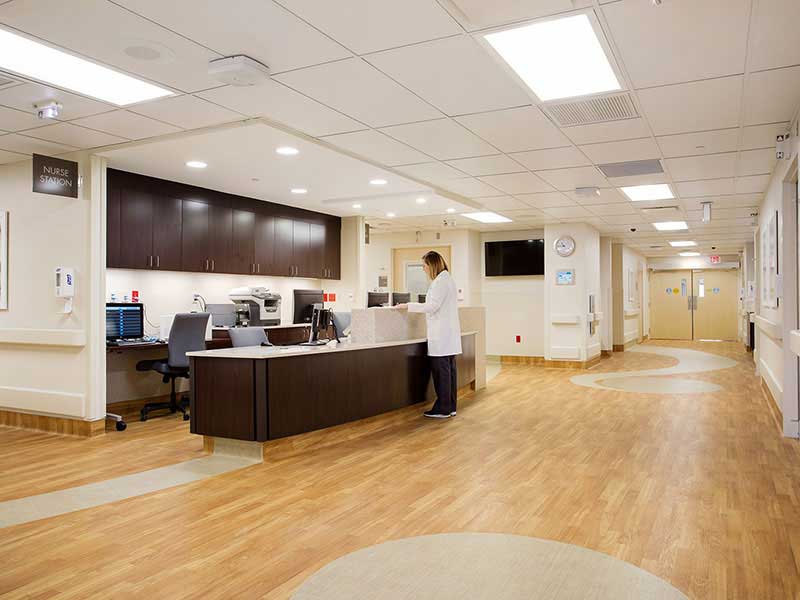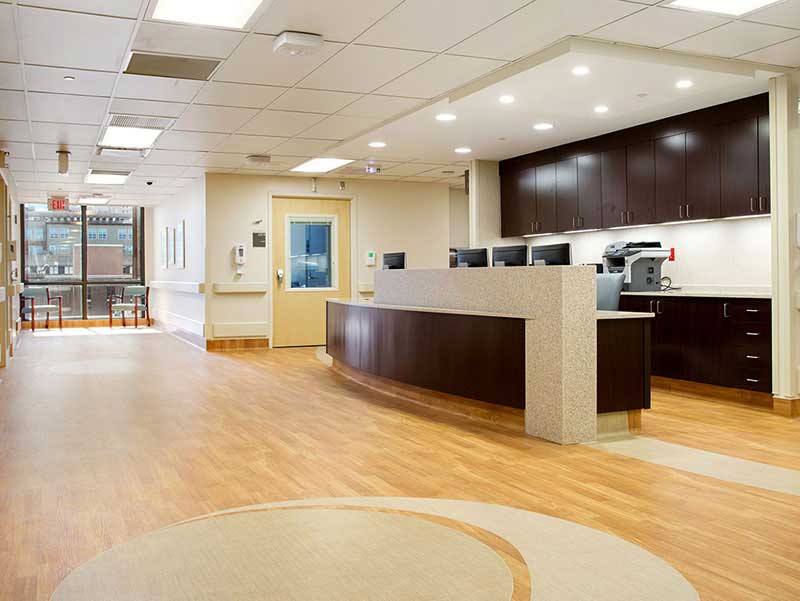Blood & Bone Marrow Transplant
COVID-19 policy for blood cancer & BMT hospital and clinic visitation
We place the highest priority on the health and safety of our patients, staff and caregivers. Due to the presence of Coronavirus/COVID-19 in our community, we are taking measures to protect our patients with compromised immune systems. Entrances to our hospital and clinic are limited to allow for effective screening of patients and visitors. You may enter the hospital through the Saratoga garage or the LaSalle garage/bridge and the cancer center clinic main entrance.
Hospital visitation policy for blood cancer and BMT units
Only visitors deemed necessary to the patient’s care and well-being are permitted to enter our facilities, and all such visitors must be screened. Our screeners have been given examples of visitors who meet this criteria, and each situation will be critically evaluated.
No visitors are allowed to enter the Blood Cancer and BMT Units for the protection of our immunosuppressed patients.
We encourage phone calls, FaceTime or other video/virtual interactions with family and friends. One caregiver per patient will be allowed when and if cleared by the health care team.
Blood cancer and BMT clinic
One caregiver per patient will be allowed after being screened at clinic entrance. If patient does not need a caregiver to accompany them, the caregiver will be asked to wait outside of the clinic waiting area for the patient to complete their visit or services. Screening will include questions re: recent travel, exposure to ill individuals, cough, fever, or other symptoms, and taking the patient’s or visitor’s temperature.
Parking guidance?
Please continue to use the same parking instructions and procedures previous to this event. You will continue to be given a parking voucher upon completion of your visit.
We will be sure to continue to keep all patients and visitors updated on the screening processes during this time.
What are the symptoms of COVID-19 infection?
- Fever
- Cough
- Shortness of breath
What can I do to protect myself and others?
Public health officials recommend the following steps to help prevent the spread of respiratory viruses, including influenza and COVID-19:
- Avoid close contact with people who are sick
- Avoid touching your eyes, nose, and mouth
- Stay home when you are sick
- Cover your cough or sneeze with a tissue
- Practice good hand hygiene by washing your hands often, using either soap and water or alcohol-based hand gel for at least 20 seconds
- Clean and disinfect frequently-touched objects and surfaces
Stay up-to-date
For additional information and ongoing updates on COVID-19, please refer to local and state health departments and the CDC’s Coronavirus Disease 2019 (COVID-19) hub.
Patients with blood cancers such as leukemia, lymphoma, or multiple myeloma may be recommended by their physician for a blood and marrow (stem cell) transplant. Our specialized hematologists will help you navigate the complex transplant process.
What happens during a blood and marrow transplant?
There are different types of blood and marrow transplants, also known as stem cell transplants, but all involve the infusion of hematopoietic stem cells, a type of cell found in bone marrow that has the ability to mature into healthy blood cells. Depending on your type of cancer, your physician may use your own stem cells or use stem cells collected from a donor, and then perform a stem cell infusion, which looks similar to a blood transfusion. As the stem cells are introduced into your bloodstream, they naturally migrate into the bone marrow. In the bone marrow, stem cells begin to replicate and become different types of healthy blood cells: red blood cells that deliver oxygen throughout the body, platelets that help blood to clot, and white blood cells to help the body fight infection. After your stem cell transplant, you will remain under close observation for a few weeks and over time, your transplanted stem cells multiply and produce blood cells to create a healthy immune system.
What is the difference between an allogeneic and autologous transplant?
Depending on your type of cancer, your physician may use your own stem cells, carefully collected and stored until you are ready for transplantation, called an autologous transplant. Or, they may use stem cells collected from a donor, called an allogeneic transplant. The donor may be a relative or someone unrelated to you, but in all cases they will be carefully chosen to ensure a good match and lessen complications.
Who will be on the patient's care team?
After your transplant, you will remain under close observation for a few weeks while your care team monitors your blood cell counts and protects you against infection. As time passes, your transplanted stem cells multiply and produce blood cells to create a healthy immune system.
You will see your care team frequently to ensure your blood levels remain healthy and you are doing well.
Stem cell transplants require a dedicated, team of experienced healthcare professionals. Your team may consist of your transplant physician, consulting physicians, nurses, BMT coordinator, pharmacist, laboratory technicians, social workers, psychologists and other experienced caregivers who walk with you through every step of the transplant journey.
Transplant Unit images
